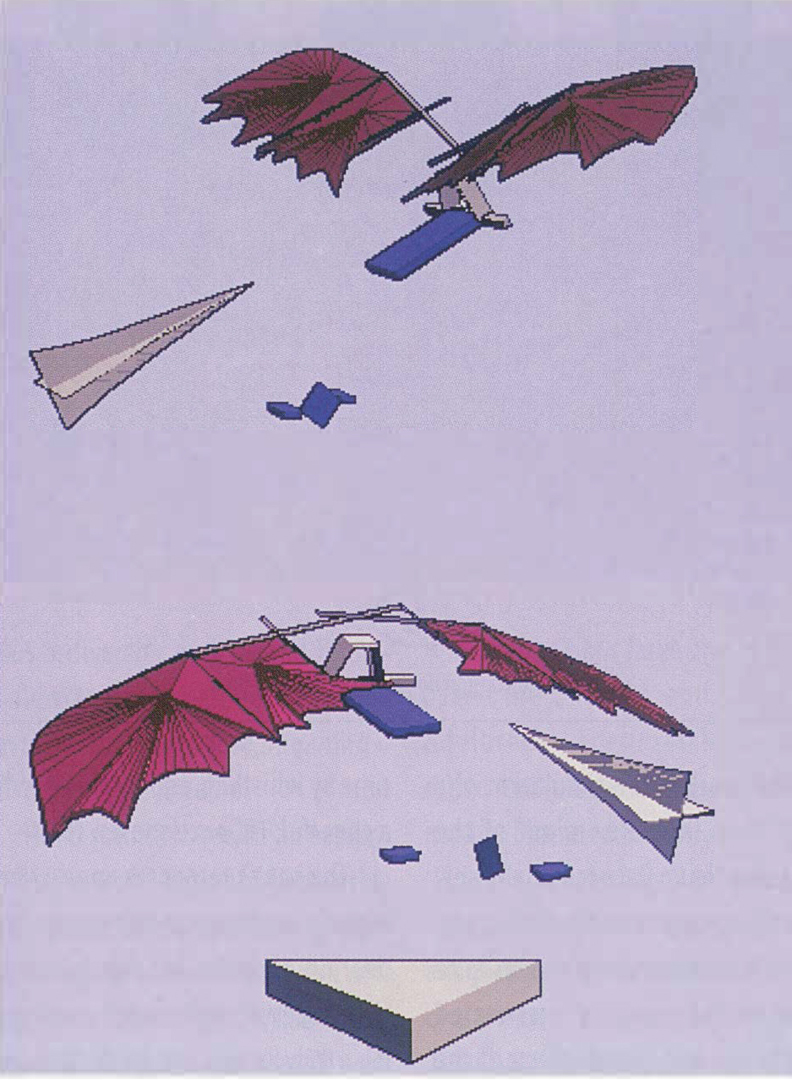Fred Truck: The Labyrinth
Artist(s):
Title:
- The Labyrinth
Exhibition:
Category:
Artist Statement:
The Labyrinth is the setting for participation in the myth of Dædalus, builder of the maze for Minos, legendary ruler of Crete. When Daedalus ran afoul of the King and was imprisoned in the Labyrinth, he built wax wings on which he and his son Icarus attempted the flight to freedom. The Labyrinth floats above, its two-faced blocks a visual pun based on the double-headed axe that marked the original Labyrinth. The ornithopter (as improved upon and built by Leonardo da Vinci) is poised below, ready to fly to freedom, needing only a pilot.
For Leonardo da Vinci, swimming under water was the original flight simulator. In Codex Atlanticus, he notes: “Write of swimming under water and you will have the flight of the bird through the air.” Nowadays, we can use computer technology in the form of virtual reality to create very credible flight simulations for jet fighter pilot training. What, I wondered, could I do with virtual reality techniques to construct an artist’s flight simulator for one of Leonardo’s flying machines?
The da Vinci Flying Machine is a heavier-than-air craft sustained in and driven through the air by flapping wings. My design, based on a combination of one Leonardo developed in the 1490s and his design for the bicycle, uses bicycle pedals to drive the wings. Rather than try to model in detail all the ropes and pulleys that provide Leonardo’s machine with avionics, I eliminated them, emphasizing instead its spare, geometric lines, and of course, the bat-like wings he drew so many times.
The da Vinci Flying Machine differs from conventional aircraft in major ways beyond the use of flapping wings and human muscle for power. Leonardo’s designs have no instrument panel. Flying is actually done by the seat of the pants—that is to say, visually. The pilot’s head is the foremost object, rather than a windshield, cockpit canopy, or engine and nose.
These points raise a good question. How will the user’s point of view operate once the user is piloting the machine? Since the pilot’s head is the foremost object, does the ornithopter need to exist as a 3D model in memory while flying?
In typical virtual reality directional techniques, motion of the user follows in the direction the user points. This technique allows flying through the Labyrinth, and means that while flying, the flying machine need not exist in memory since the pilot’s gaze would usually be linked to direction. It is more desirable for the pilot to be able to look in a direction that differs from the ornithopter’s flight path. This lends a degree of visual realism to the virtual experience of piloting the craft, because there are no restrictions on the pilot’s ordinary manner of surveying the environment.
When the user has a point of view independent of the direction of movement, it is sometimes referred to as the hummingbird metaphor. The hummingbird metaphor is particularly appropriate for the da Vinci Flying Machine because like the bird, its wings flap.
In the future, several directions are planned. These include, but are not limited to, 1) comparison of third-person virtual reality (in which the user sees himself or herself piloting the flying machine) and immersive virtual reality (in which the user experiences the virtual environment directly); and 2) construction of a hardware interface for the Leonardo computer model, which will give the user the physical experience of piloting da Vinci’s flying machine.
Affiliation Where Artwork Was Created:
- Electronic Bank





